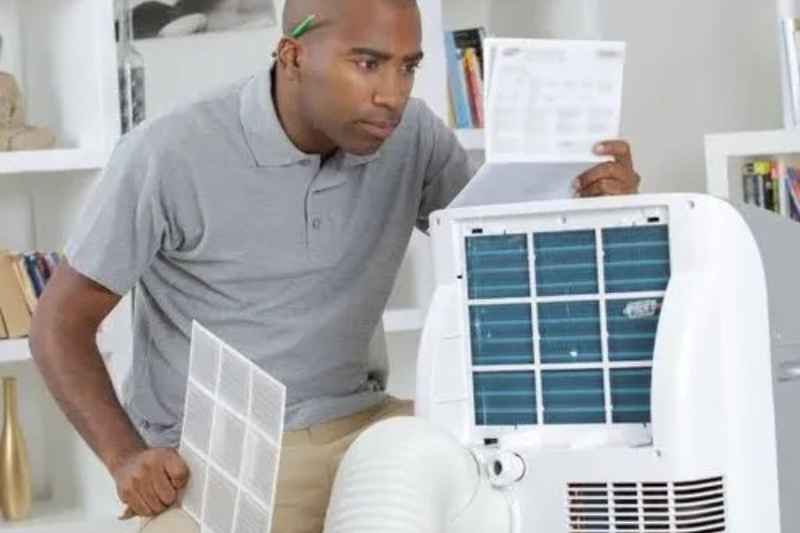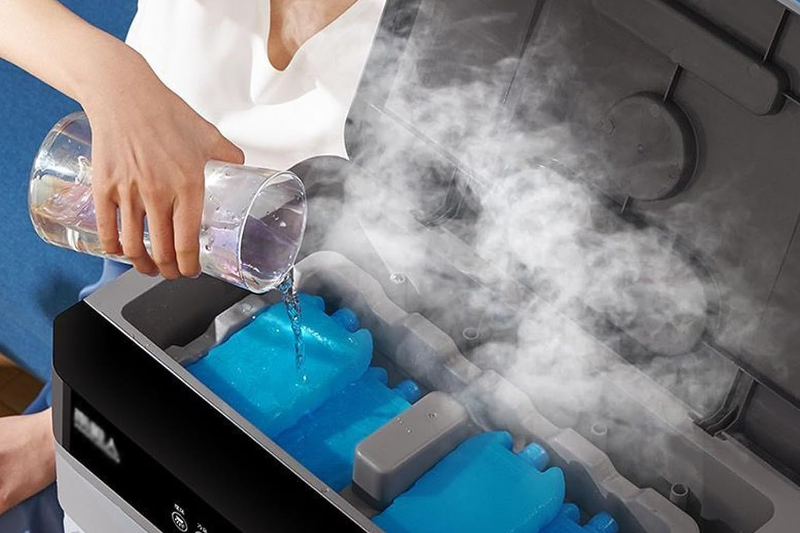Table Of Contents
Evaporative air conditioning offers a highly efficient and eco-friendly way to cool your home, especially in Sydney’s typically dry and hot climate. This system, utilising the natural water evaporation process, helps reduce indoor temperatures and enhances air quality by adding dampness to the dry air.
This manual will delve into the essentials of evaporative cooling, covering everything from the basic operation principles to detailed maintenance and operational best practices. Understanding these elements can significantly enhance your comfort and efficiency, helping you get the most out of your cooling system. Read on to learn more!
Understanding the basics of evaporative air conditioning

What is evaporative air conditioning?
Evaporative air conditioning, often called swamp cooling, cools air through evaporation. This environmentally friendly option uses a simple process that involves a fan, a water pump, and pads soaked in water to cool and humidify the air. As hot air passes through these wet pads, the water evaporates, and the air is cooled before being circulated back into your living space.
Critical components of an evaporative air conditioner
The main components of an evaporative air conditioner include the fan, the water pump, the water reservoir, and the cooling pads. The fan is critical in drawing warm air into the unit and pushing the cooled air out. The water pump circulates water from the reservoir to the cooling pads, which is crucial for evaporation.
The principle behind cooling through evaporation
This cooling method is based on a natural phenomenon where water absorbs heat during evaporation. This phase change from liquid to vapour removes heat from the air, cooling it effectively. This principle makes evaporative cooling particularly suitable for hot and dry climates like Sydney’s.
Benefits of using evaporative cooling in a climate like Sydney’s
The primary benefits of evaporative cooling in Sydney include lower operational costs and reduced environmental impact. Unlike traditional air conditioners that use refrigerants and consume high levels of electricity, evaporative coolers use only water and a relatively small amount of energy to run the fan and pump. This not only helps in cutting down electricity bills but also reduces your carbon footprint.
Comparison with traditional air conditioning systems
Evaporative air conditioners starkly contrast conventional air conditioning systems, especially in terms of installation, running costs, and environmental impact. They are less complex to install and maintain, making them an ideal cost-effective cooling solution.
Preparing to use your evaporative air conditioner

Checking your system before the hot season
It’s crucial to ensure that your evaporative cooler is in prime condition before the onset of summer. This involves checking for any potential fan, pump, or pad issues that might impede its efficiency. Ensuring everything is in working order can prevent breakdowns during peak usage.
Importance of proper installation
Correct installation is vital for maximising the efficiency of your evaporative cooler. The unit needs to be placed where there is enough air inflow and outflow to facilitate the movement of cooled air throughout your home. Poor installation can lead to inefficient cooling and increased energy consumption.
Setting up your environment for optimal cooling
To enhance the performance of your evaporative cooler, it’s essential to configure your home environment appropriately. This means allowing for a slight opening in windows or doors to create an effective airflow pattern that helps achieve the best cooling effect.
Adjusting windows and vents for adequate airflow
Proper window and vent adjustment is crucial to balancing air coming in and going out. This balance is critical to ensuring your home remains relaxed and comfortable without compromising air quality or humidity levels.
Regular maintenance checks to perform
Conducting regular maintenance is essential for keeping your evaporative air conditioner running efficiently. This includes maintaining the cooling pads, checking the water level in the reservoir, and ensuring the fan and pump are operating correctly. Regular check-ups help extend the lifespan of your unit and prevent costly repairs.
Best practices for operating your evaporative air conditioner

Ideal settings for different times of the day
Adjusting the settings of your evaporative cooler according to the time of day can enhance its efficiency. For instance, during the more excellent morning hours, the settings can be lower, while during the peak heat of the afternoon, you might need to increase the settings to maintain a comfortable indoor temperature.
How to adjust settings based on weather conditions
The effectiveness of your evaporative cooler can depend heavily on the weather. On sweltering days, running the system for extended periods may be necessary to maintain a comfortable indoor environment. Conversely, running the system intermittently or at lower settings might be sufficient on cooler days.
Tips for energy-efficient use
To maximise the energy efficiency of your evaporative cooler, it’s advisable to use it with other cooling strategies, like ceiling fans. These can help distribute the cooled air more evenly throughout your home, reducing the need to lower the temperature further and saving energy.
When to run your system
Evaporative coolers are most effective when the air is hottest and driest. Running your system during these times will ensure you are making the most of its cooling capabilities, providing relief from the heat without excessive energy use.
Avoiding common mistakes in operation
A common mistake in operating evaporative coolers is running them in completely sealed environments, which leads to increased humidity and reduced cooling efficiency. Ensure enough ventilation allows for proper air exchange and prevents humidity from building up inside your home.
Maintaining your evaporative air conditioner

Routine cleaning and maintenance tasks
Keeping your evaporative air conditioner clean is crucial for its effectiveness and longevity. This includes regular cleaning of filters and cooling pads and ensuring that the water distribution system is clear of any blockages or buildup that could impede its function.
How often to replace pads and other components
Cooling pads and filters in your evaporative cooler should be repaired or replaced regularly to maintain air quality and cooling efficiency. Depending on the water usage and quality, it might be necessary to replace these components once a season or as required.
Handling common issues and troubleshooting
Issues such as unusual odours or inadequate cooling can typically be resolved by basic troubleshooting, such as cleaning or replacing the cooling pads, checking for blockages in the air intake, or ensuring the water pump is functioning correctly.
When to call a professional for maintenance
While regular DIY maintenance is essential, some situations require the expertise of a professional. Professional service can ensure that your unit operates efficiently and safely if you encounter persistent issues or the system needs more complex repairs.
Seasonal preparation and storage tips
Preparing your evaporative cooler for storage is essential at the end of the cooling season. This includes thoroughly cleaning the unit, drying the pads, and draining the water reservoir to prevent mould growth and unpleasant odours. Proper storage will ensure your cooler is ready to perform optimally when the next warm season rolls around.
Enhancing Home Cooling Strategies

Strategic ventilation to enhance cooling
Effective evaporative air conditioning isn’t just about the cooler but also involves innovative ventilation strategies. Creating an airflow pattern optimising excellent air distribution can significantly improve your home’s comfort. This includes using ceiling fans with your evaporative cooler to ensure that cool air is evenly distributed throughout your home.
Using thermal curtains and blinds
During the hottest parts of the day, solar gain through windows can counteract the cooling effect of your evaporative air conditioner. By installing thermal curtains or reflective blinds, you can reduce this heat gain, reducing the workload on your cooling system.
Landscaping for natural shade
Planting trees around your home strategically can provide natural shade and reduce the temperature around your building. This can be especially effective in cooling the air before it enters your evaporative system, enhancing the unit’s efficiency and effectiveness.
Insulating your home
Proper insulation keeps heat in during winter and out during summer. Ensuring your home is well insulated can prevent heat from penetrating indoor spaces, reducing the demand for your evaporative cooling system and maintaining more consistent indoor temperatures.
Smart timing for cooling
Using a smart home system or programmable thermostat can help you optimise the timing of your evaporative cooler’s operation. You can maximise comfort by cooling your home during the more excellent parts of the day and maintaining it through the peak heat while minimising energy use.
Conclusion
Understanding how to use and maintain your evaporative air conditioning system properly is vital to enjoying a relaxed and comfortable home environment during Sydney’s hot months. Following these guidelines, you can ensure your system operates at peak efficiency, providing adequate cooling while keeping energy costs low.
For complex maintenance issues or to ensure your system is in top shape, don’t hesitate to consult with a professional air conditioning service. They can provide the expertise and support needed to maintain the performance and longevity of your evaporative cooler.



